Faux suede is a modern material that is in high demand among the population. Outwardly, it is almost identical to natural, but there are a number of characteristics where such textiles can even win. At the same time, production requires significantly less financial resources.
It is also called "eco suede", the main difference between which and the natural canvas is a shorter life.
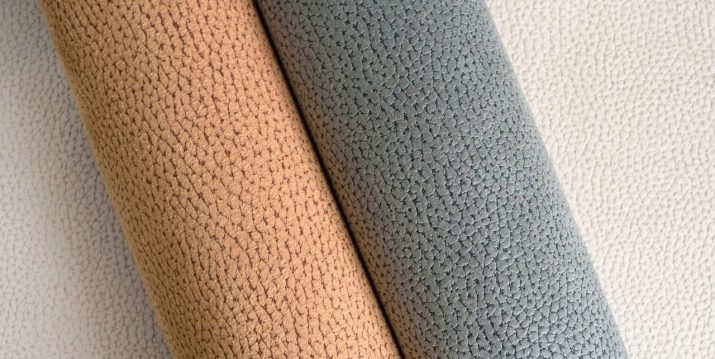
What kind of material is this?
Eco suede is a new generation of material. Uninitiated people mistakenly consider it a cheap analogue of the natural, but this is not entirely true. The appearance of such textiles is very presentable, allows you to use it without loss of quality, but with the lowest material costs and with easier maintenance.
So, faux suede is a material made of polyester and based on natural cotton. It is treated with a special Teflon-based impregnation, which helps it to be more durable and resistant to external influences without losing its appearance. For example, eco suede is not prone to fading and is torn with difficulty. And this means that things from this material on a knitted basis are durable, which cannot but please their owners.
It is quite difficult to distinguish eco suede from the real one by eye. Both materials have a characteristic pronounced pile on the outside.
There are two ways to produce this material:
- woven;
- non woven.

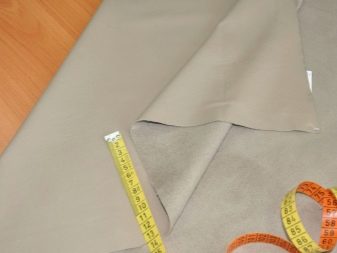
Consider the differences between them.
In the first case, microfiber is used, the filaments of which are separated and form a small pile.After it is processed, the pile is applied to a specially prepared base. At the output, a web is obtained that is characterized by high strength, but in order to become resistant to stretching, a special layer must be applied. Raincoats and jackets are made from the material of such a plan, it is quite durable and is considered very high quality.
The nonwoven method, however, involves polyester fibers in the materialthat are superimposed on the base. The base itself is either cotton or synthetic. Non-woven fabrics require less financial costs for production, and they also require less serious care. Most often, just such a material is chosen by furniture manufacturers to make upholstery out of it for their products.
To summarize, it can be noted that eco suede contains polyester or microfiber fibers superimposed on synthetic, cotton or silk material.


Advantages and disadvantages
According to consumer reviews, the benefits of eco suede supersede its disadvantages. However, before purchasing products from such material, you must carefully familiarize yourself with its pros and cons.
First, let's talk about the merits. This fabric is universal and is popular at any time, it can be used for interiors of different styles. In this case we are talking about upholstery. It will look equally good both in a cozy home room and in a strict office. The material is practically not deformed or wiped.
As for the natural analogue, it is able to stretch and crack when used as furniture upholstery. With artificial suede, such a nuisance will not happen, stretch marks will not appear even with increased load.

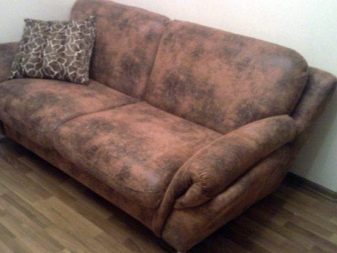
In addition, static electricity cannot accumulate in it. The entire surface has the same density than the real one cannot boast. And also eco suede can safely withstand direct sunlight, without fading and without changing color.
Upholstery will not stick to the body and is very comfortable to use at any time of the year. For example, in the cold winter months, the material warms, and in the summer it gives the long-awaited cool. This also applies to other things from eco suede. Since the fabric has Teflon impregnation, care for it does not cause difficulties and is quite easy.
In addition, one cannot fail to note the attractive appearance and visual similarity with natural material.


However, for all these advantages, there are a number of disadvantages that you need to be prepared for. For example, leaving, no matter how simple it may be, will still take time. Such materials do not tolerate moisture, so washing should only be in exceptional cases, when other options do not help.
The best option is dry cleaning. In addition, the fabric is still capable of tearing under certain circumstances, for example, if the pet uses it as a sharpener for its claws. Light suede gets dirty very quickly, so it will often have to be cleaned or, in the case of furniture, use capes or a removable cover.
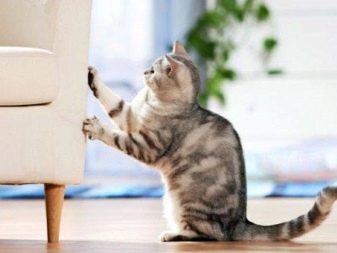

Differences from natural fabric
Despite the fact that the outwardly artificial and natural materials are very similar, there are still differences between them. And here the question arises - is it possible to distinguish these 2 types of suede and how to do it? After all, a mistake can cause trouble, for example, when choosing shoes and clothes, buyers often look for a specific type. To answer this question, you must be aware of some of the subtleties of choice.
So, to determine whether a natural product is on the counter, you need to take a closer look.
Real suede looks very natural, its structure is heterogeneous, and scratches and cracks can also be observed.


Such material is porous and uneven, so when painting its color will slightly vary in different areas. In addition, the thickness will also be different.
It will be useful to pay attention to the smell. Natural suede smells of leather, while synthetic suede comes from artificial. Well, no doubt, the price will be very different. If the material can be touched, it should be held by hand. In the case of the original, the place where you touch the canvas will brighten a little.


Application
Faux suede is used for the manufacture of clothing, shoes and upholstery. To make coats and jackets, most often a cotton-based canvas is taken. Stitched things sit perfectly on the figure, hugging it. The basis of knitwear is an ideal choice for sewing dresses and blouses; skirts and original accessories are also made from it. You can often find gloves, bags and berets from eco suede.
In the production of shoes, the material is also in high demand. From it make boots, boots and shoes. As an upholstery, furniture factories use faux suede for their products. In addition, we can use this fabric in everyday life.
Recently, it has been used to make very convenient glass wipes that absorb moisture perfectly.



How to care?
If it happens that a stain appears on the eco suede, this is not a reason for panic. Easy to clean at home. As for clothes, it can be washed gently using gentle means. Do not be afraid to stretch it, the procedure will not do harm.
Caring for suede shoes is also easy. It can be cleaned with a special brush, the main thing is not to forget about the impregnation, which will help repel water. Such a tool should be chosen, focusing on the brands of well-known manufacturers, a poor-quality composition is able to glue the villi, and if there is color, it can unevenly paint the product, finally ruining it.
As for the upholstery, there are subtleties. Consumers agree that only dry cleaning can be done. This also applies to cases when oily spots appear on the material. Using water will only make it worse. It must be borne in mind that the upholstery needs constant care, it must be vacuumed, and the most contaminated places cleaned with a brush.

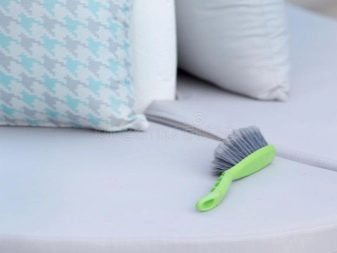
If it is not possible to use protective covers and spots have appeared, you can use washing powder, an eraser and salt. If you want to use another tool, it is better to test it in advance. To do this, apply the composition to an inconspicuous area of tissue.
In the case of clothes, you can try to get along with a cool soapy solution. It is carefully applied to the stain, which is cleaned with a brush. Drying with a towel will help get rid of moisture.
When cleaning faux suede, you need to remember that brush movements must follow the direction of the pile. The material is quite moody, so it’s easier to avoid mistakes than later to fix them.

Which is better: suede, flock or velor?
There is no doubt that beautiful and high-quality furniture become an adornment of any interior. In addition to internal elements and mechanisms, upholstery plays an important role, for the creation of which a wide variety of materials can be used. Consider what is better - suede, flock or velor.
Velor looks like velvet, but its villi are shorter. Although the material is rather delicate, it is durable and free of deformations. However, wet cleaning is contraindicated for this fabric, as a result of which it will lose its attractive and rich appearance.
Flock also has a pile, but is non-woven. It is extremely practical and is often used in the manufacture of furniture of a budget price category.


The canvas calmly tolerates moisture, it is not afraid of pets that decide to sharpen their claws, and also does not fade in the sun and is not afraid of mechanical effects.The main disadvantage is the ability to quickly absorb odors. This can be a problem, for example, in a room in which they smoke.
Suede is very durable, does not wear, has a rich appearance. At the same time, the price is quite acceptable. However, it does not tolerate exposure to an aggressive chemical environment and can break with serious exposure.
How to distinguish natural suede is described in the next video.





